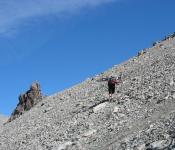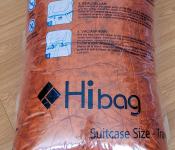지난 9월 이스트시에라 백팩킹 공지때 아래의 몇몇 용어들도 사용해 코스를 포함한 백팩킹의 대략적인 정보를 표시했는데 백팩킹 대화중 몇몇분들이 용어들을 생소해 하셨습니다. 특별산행 (백팩킹/ 고산등반/ 암벽등반) 공지에도 가끔 사용되는 코스의 난이도를 표시하는 Yosemite Decimal System 와 코스의 지형을 표시하는 용어들을 이용하면 코스와 전체적인 산행의 난이도에 대한 상호 이해에 도움이 될까하여 정리하여 올려봅니다.
Yosemite Decimal System (YDS)
미국과 한국등에서 보편적으로 사용하며 코스의 난이도를 표시하는데 이용
Class 1
Walking with a low chance of injury, hiking boots a good idea. You can balance with your hands.
주말 산행과 같이 평이한 코스 – 손을 사용해야 하는 경우가 드뭄
Class 2
Simple scrambling, with the possibility of occasional use of the hands. Little potential danger is encountered. Hiking boots highly recommended. You can use a rope if necessary.
가끔은 손을 사용하여 기어 올라야 하는 경우가 있을수 있는 루트. 전혀 경험이 없는 초보자를 제외하고는 로프를 사용이 필요없음. 미끄러지거나 추락시 부상의 위험, 그립이 좋은 등산화 착용 권장.
예) Mt. Whitney
Class 3
Scrambling with increased exposure. Handholds are necessary. A rope should be available for learning climbers, or if you just choose to use one that day, but is usually not required. Falls could easily be fatal.
손을 빈번하게 사용하여 기어오르는 루트. 초보자라면 때로 로프를 준비하여야 할수 있음. 절벽, 낭떨어지 구간을 옆을 끼고 트레일을 오르는 코스포함. 추락시 치명적, 트레일의 표시가 불분명한 바위구간이 많음. 위성 위치추적 지도나 경험자의 코스 리딩이 도움이되는경우가 많음.
** 클라스 3 이라도 산행경험이 많지 않거나 부주의할 경우 코스를 잘못들면 클라스 4~5 구간을 잘못들수도 있음을 항상 염두에 두고 주의
예) Banner / Ritter Peak, Mt. Conness/ North Peak
Class 4
Simple climbing, with exposure. A rope is often used. Natural protection can be easily found. Falls may well be fatal.
중급 클라이밍 구간이 있고, 대부분은 로프를 사용하는 루트. 추락 하면 위험하거나 치명적이 될 수 있다. 상당히 절벽이나 낭떨어지에 노출이 심한 코스
Class 5
Is considered technical roped free climbing (without hanging on the rope, pulling on, or stepping on anchors); belaying, and other protection hardware is used for safety. Un-roped falls can result in severe injury or death.
클라스 5 하실거면 알아서 해석 하세요 ㅎ - 암벽 등반 경험자 Only !!
* 그외 5.2 ~ 5.15a 와 같은 숫자는 암벽등반의 난이도를 표시한 등급체계이니 암벽등반을 하실게 아니면 무시하시면 됩니다.
산행에 많이 사용하는 용어들
*Exposed / Very exposed : 절벽, 낭떨어지에 노출된 구간을 지칭 very exposed 라 표시된 트레일이라면 심장이 가끔 쫄깃해지는 경험도 하셔야 할듯 ㅎ
*Scrambling: "a walk up steep terrain involving the use of one's hands"
스크램블링 – 미끄럽거나 Rocky 구간의 급한 경사길을 오를때 가끔 손발을 함께 사용하여 오름
*Bouldering: Bouldering involves climbing small cliffs or boulders, often no more than 4 or 5 metres in height, with no ropes or equipment.
볼더링 - 로프나 장비없이 손발을 사용해 등반 가능한 정상부근이나 바위지역을 오름
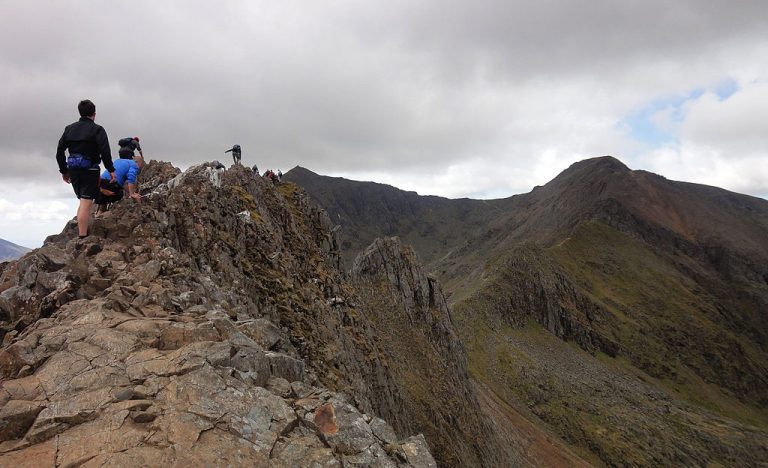
*Scree: A field of loose rocks, typically smaller than the size of a head, that have the potential of moving like marbles beneath your feet. As dangerous as it sounds, hikers can easily get ankle and knee injuries in a scree field so tread cautiously.
조그만 돌들이 많은 경사구간, 돌이 움직이며 미끄러운구간, 미끄러지면 발목 무릎 부상위험 – 스크램블 구간이라고도 함
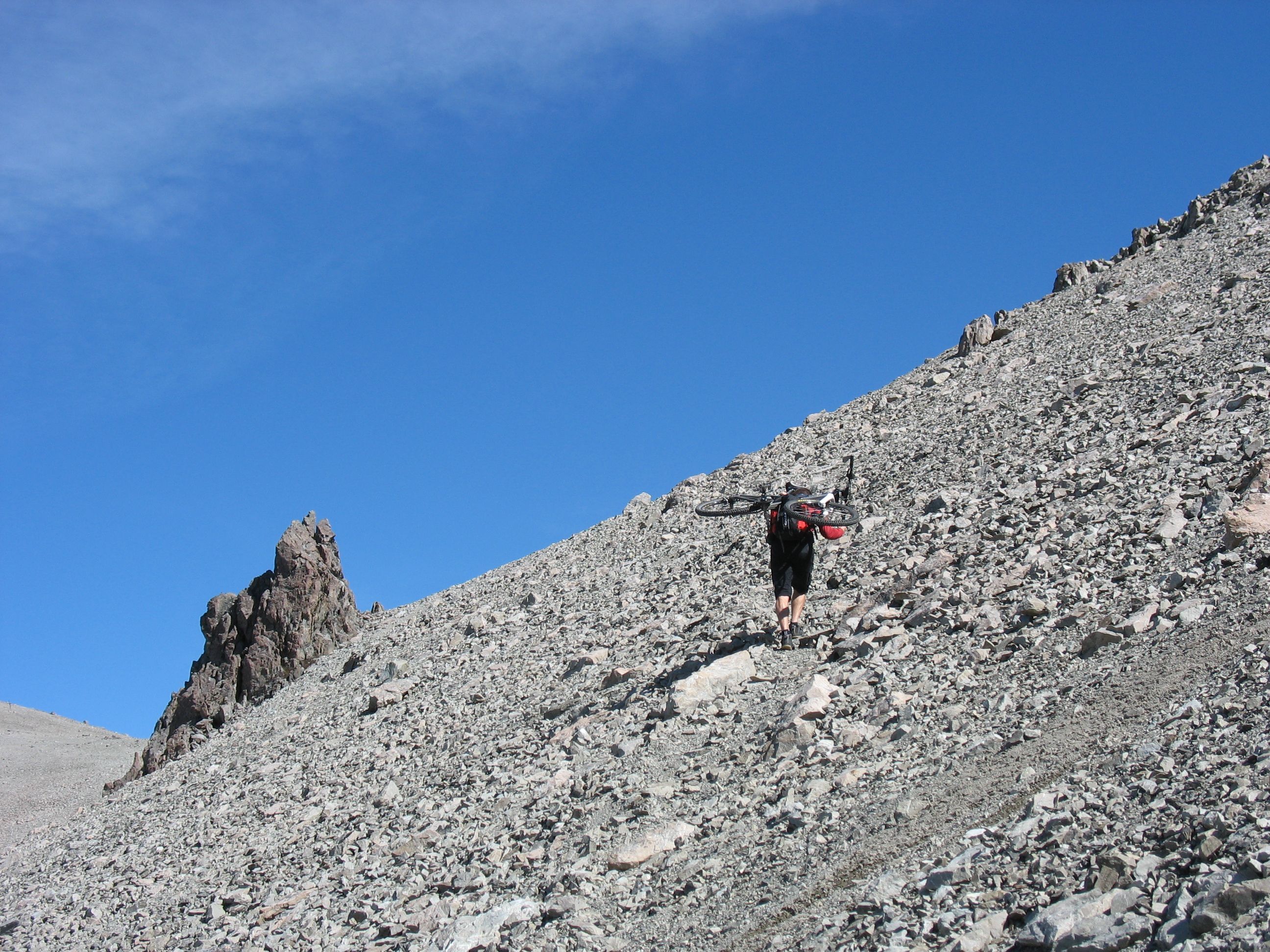
*Talus – Similar to a scree, a talus is a field with large boulders, instead of small rocks. Expect to crawl or “scramble” over on hands and feet at a slow pace.
스크리(scree) 보다는 조금 큰 바위들의 경사구간으로 가끔 손을 사용해 올라야 할수 있는 구간 – 스크램블 또는 볼더링 구간이라 칭하기도 함

*Cairn – A stack of rocks often used to mark trails. It’s similar to blazes, but usually found in areas where trees are spars
루트찿기 힘든곳에서 방향표시로 많은 도움이 됨
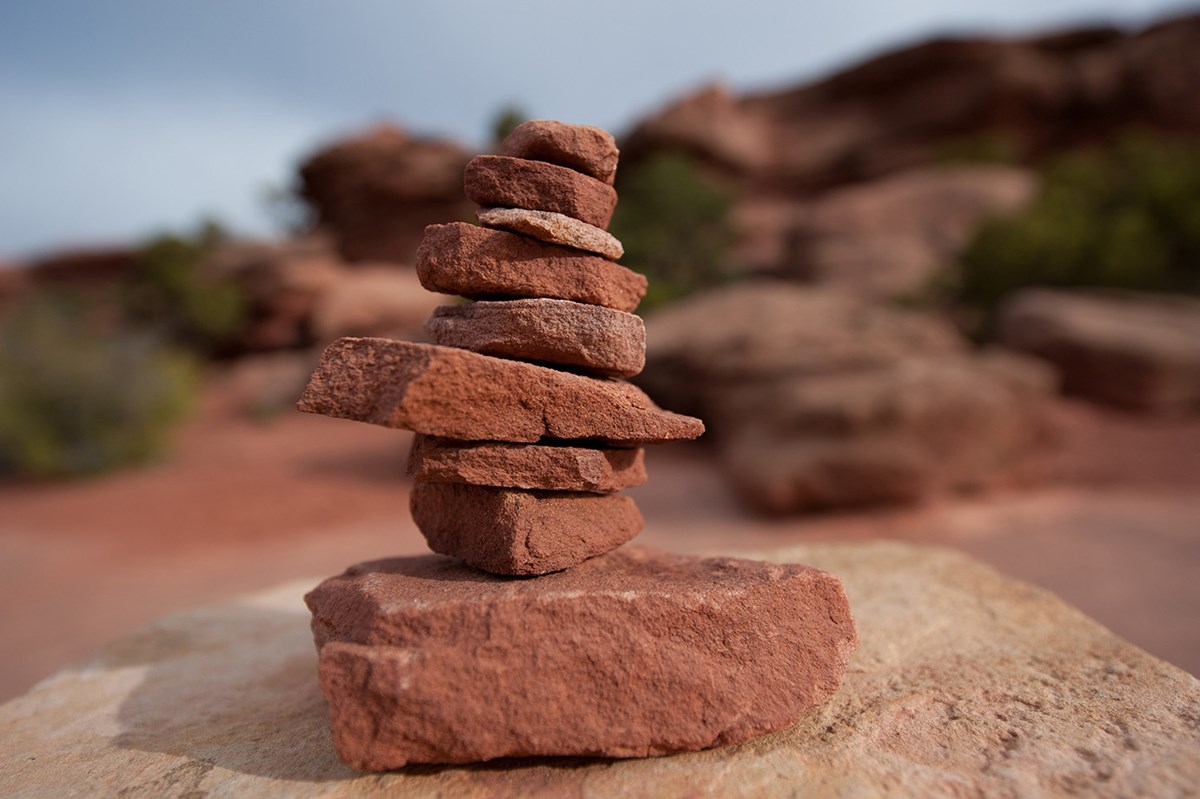
그외 재미로 알아보는 산행 용어
*Cat Hole – A 6-inch wide by 8-inch deep self-dug hole where you bury feces and toilet paper. Typically, cat holes are at least 200 feet from campsites, trails and weather sources.
용변보시고 난후에는 캣홀 만들어 처리하세요 ㅎ
*Ford – Expect to get your feet wet in these river crossings! Avoid going barefoot and bring along some sandals and trekking poles for safety reasons. A ford will never come above your knees, but you can slip and lose gear or make your backpack wet.
강이나 개울을 건널때 발이젓는걸 포드라 말하는게 흥미롭네요.
*Book Time - Book Time is a reference to the estimated amount of time a hike should take, following this simple formula: 30 minutes for each mile plus 30 minutes for each 1,000 feet of elevation gain along the hike.
트레일에서 목적지가 얼마나 남았나 질문이나 대답할때 Book Time 이란 용어를 자주 사용하는데 보통 1마일을 30분, 1000피트 고도 게인하는데 30분정도로 계산하네요
*NOBO – Thru-hikers headed north along a trail say they’re headed “NOBO,” short for North Bound.
JMT 나 PCT 등을 남에서 북으로 종주.
근데 트레일에서 누가 Heading to NORTH? 라고 묻는경우가 있었습니다. 저는 NOBO 를 말하는지 알고 물어보니 힘든 오르막으로 올라가야 하느냐를 이렇게 물어보는경우도 있다하네요. 그럼 내리막은??
*SOBO – If NOBO is North Bound, SOBO is — you guessed it!
*Thru-Hikes – An end-to-end hike along the entire trail. More notable thru-hikes are the Appalachian Trail (AT) and the Pacific Coast Trail (PCT), where you can expect to trek at least 100 miles a week. A thru-hiker is someone along the trail.
JMT, PCT, AT 등을 전코스 종주
*Section Hike – Section hikes are part of a thru-hike. Hikers often choose to complete longer trails like the PCT or the AT through smaller section hikes.
Thru- Hikes 가 전코스 종주이면 Section Hike 는????
*Trail Angels – These are basically kind locals who take pity on dirtbags, giving rides into the next town or leaving treats (read: beer) along the trail.
PCT 나 AT 를 종주하는 사람들을 위해 이렇게 좋은 인정을 베푸는 사람들이 있네요.
*Trail Magic – Treats or cache found along the trail, left by trail angels or simply discarded or lost by previous hikers.
종주 하시는분들이 가끔 이걸로 도움도 주고 도움 받기도…
*Trail Name – A moniker or nickname that thru-hikers give themselves along the trail. Typically, a trail name is earned on merit or backstory, not self-chosen. Sometimes, a trail name can help disguise a hiker’s true identity.
우리도 닉네임이 있긴한데 여기 Trail Name 은 JMT, PCT, AT 등 긴 코스의 종주를 하는 사람들이 스스로 선택하기도 하지만 주로 특징이나 캐릭터에 맞게 다른사람들이 애칭으로 만들어 부르거나 지어 주네요. ![]()
![]()

 산행중 쥐가 났을때
산행중 쥐가 났을때


